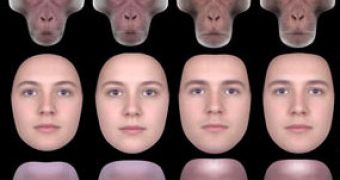The face is one of the few things you cannot, under any circumstance, neglect in a new possible mate. For humans, the face is an important source of mating and social information. By casting only one glance, you can see if a face is attractive or not. Many studies have focused on issues like symmetry and the differences between a masculine and a feminine face in an attempt to predict the level of attractiveness of a face. However, the exact reasons for which gender specific faces and symmetry are so attractive are harder to explain.
At the moment, it is highly speculated that symmetry betrays genetic quality, while highly gender specific face denotes increased fertility. Others say that preferences for these faces are the result of visual experience, being rather cultural than biological.
A new research, published in the PLoS ONE journal, investigated this possible connection between mating 'quality' and facial advertising of quality. The team at the University of Stirling assessed symmetry and sexual dimorphism from human faces, both in European populations and in Hadza people (hunter-gatherers from Tanzania), as well as in macaque monkeys, non-human primates. In all populations, symmetric males had more masculine facial ratios and symmetric females had more feminine facial ratios.
It appears that facial sexual dimorphism and facial symmetry are connected, being a biological clue, not a cultural issue acquired along the way. The face signals biological health for all human populations and also for various primate species.
In fact, our genes encode perfect symmetry but there will always be environmental factors at play during the development of the body, and they are rarely constant. Because they are not constant, they produce environmental stress, which can be chemical (hormones, contaminants, acidity and others), physical (temperature, humidity and others) and biological (pathogens, parasites, predators, competitors). The way in which an organism succeeds in balancing these factors that influence being as symmetrical as possible reflects healthy, strong genetics.
Increased symmetry signals that an individual can be a strong, healthy mate capable of producing healthy offspring, and points to an ability to deal with any environmental problems encountered in the life of that particular person.

 14 DAY TRIAL //
14 DAY TRIAL //